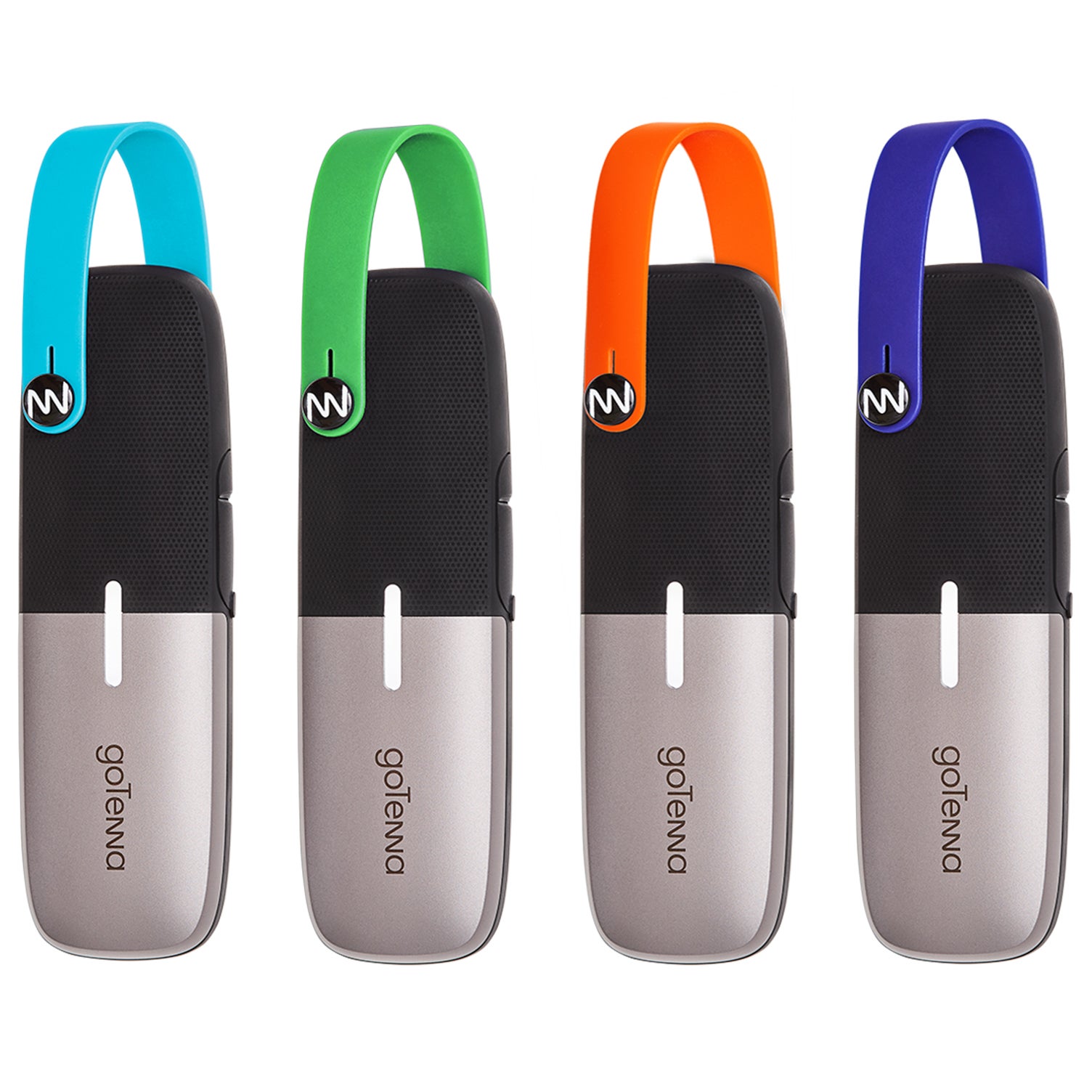The original goTenna, which debuted last year, was a pretty slick backcountry communications tool. The battery-powered stick paired with a smartphone via Bluetooth, allowing you to send text messages and broadcast your location without cell service or satellite data. Users could send messages to people with another goTenna and it wasn't an open channel, like a walkie-talkie: only your intended recipient (or recipients) would get your messages, and vice versa.
The main problem with this system was that while you might eke out a few miles of range in a wide-open area, in congested places that distance would drop to as little as half a mile. If your friend was farther than that, you were out of luck.
Now there's a new product, called , which is a massive improvement. It’s the first consumer product that creates a mesh network that is entirely off-grid, entirely mobile, and long range.
What’s a mesh network? Say you’re in terrain where the point-to-point range would be, at best, two miles. But your friend is four miles away. If there are any other goTennas Meshes between the two of you, they'll act as relays, passing the message along until it gets to you. Basically, it creates a standalone communication network that gets stronger the more people join it. Usually more people on a network makes the network slower, weaker, and generally worse—think: when all your neighbors are binge-watching Netflix. It’s cool to see a network where the opposite is true.
Obviously, though, this depends on people actually buying it and using goTenna Mesh. It could leave you relying on pure luck, hoping you're near other people who also own and are actively using the product. The first generation goTenna is already being used by search and rescue teams, which could definitely help make the device mainstream, but only if those teams upgrade to the new model.
As for the hardware, the goTenna Mesh is smaller and lighter than the original, coming in at 1.7 ounces. It can clip to your keychain. The company claims the battery will last 24 hours or more on a single charge, on standby. If you’re sending a lot of messages, you may burn through that power faster. Because you can use goTenna with your phone even when it’s on airplane mode your phone should last for days between charges (obviously provided you aren’t using the camera like crazy). It recharges via a microUSB port. While it isn’t fully waterproof, it is built to work in rain, dust, and snow, and the first generation has been used everywhere from ski resorts to Burning Man.
Preorders for the goTenna Mesh start now. GoTennas come in pairs, and the preorder price will be $130 for two. After that they’ll retail for $180 a pair. The original goTenna will continue to be sold at $150. Even at full retail pricing, an extra $30 for the Mesh network seems very reasonable.
The company is also launching goTenna Plus, its first subscription service. GoTenna already comes with free maps, but with Plus, you’ll get topographical maps as well. It will also give you individual delivery confirmations for each person in a group you're messaging (so you know if lagging Andy got the info or not), and it will put together trip stats, including distance, elevation gained, and more.
The biggest benefit to goTenna Plus, though, is that it will have a network relay to actual cell service. So if you have no cell reception and want to send an SMS to someone back in the city, if there's another goTenna user who does have a network connection, the service would automatically bounce the message through them, then send it through their cellular connection. That works with the old version and the Mesh, but with the old one you have to have a direct connection to the person with the network, whereas with Mesh you could have several degrees of separation between you and the person with the network.
GoTenna Plus starts at $10 for your first year, if you subscribe within the next 90 days. After that, it’s $30 a year.
Both the Mesh and goTenna Plus have a lot of great backcountry safety potential—if people actually buy and use them.


